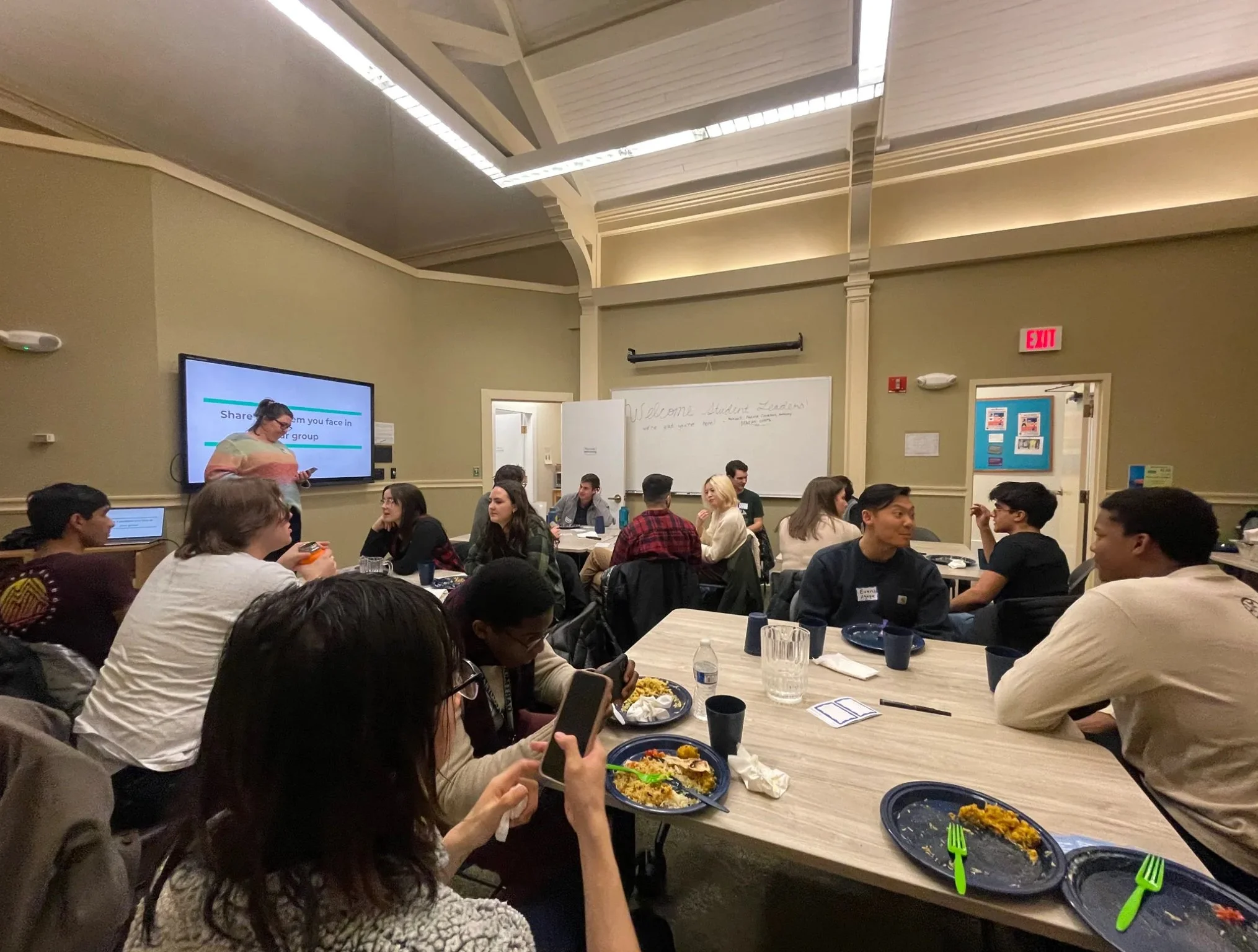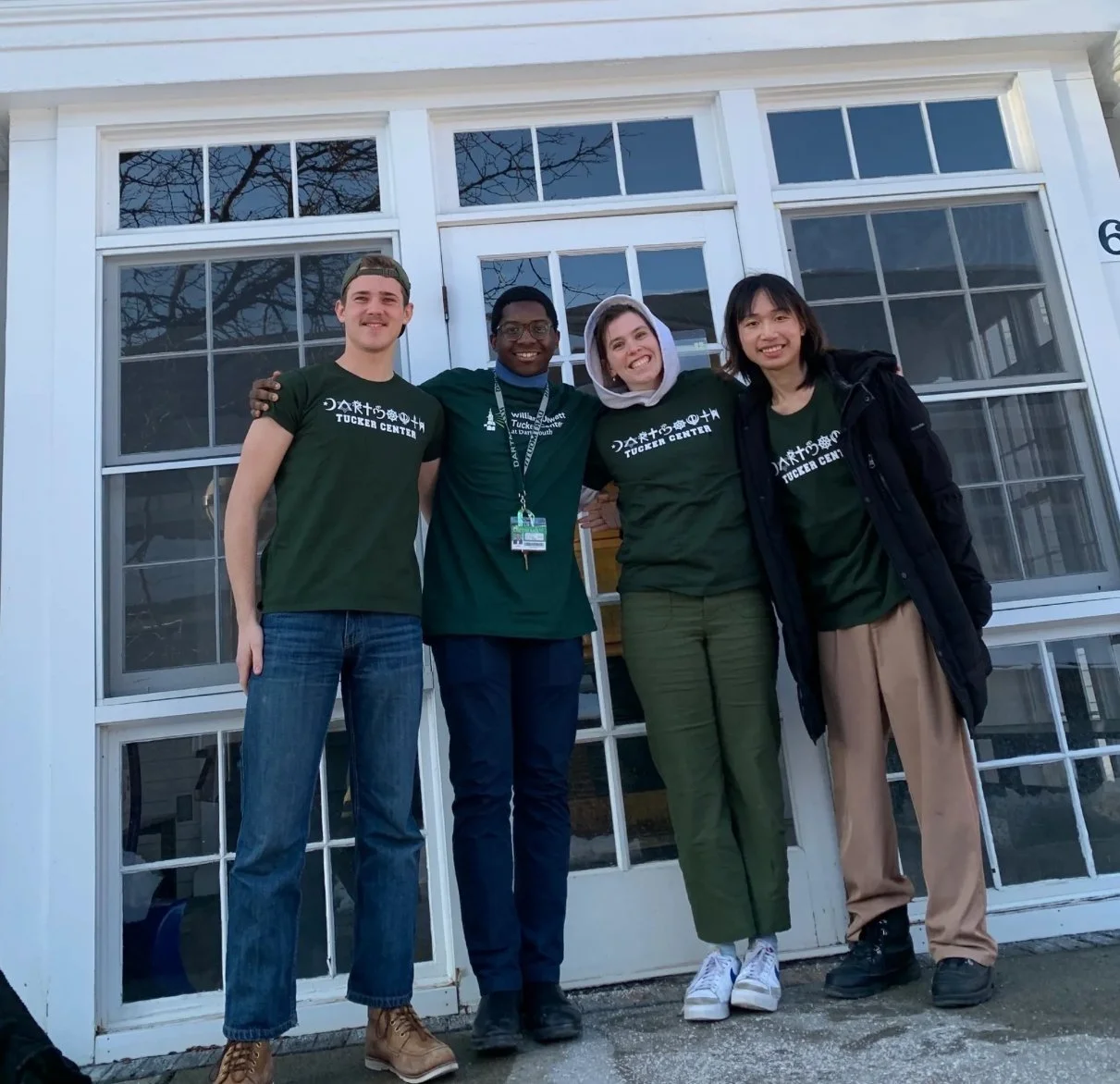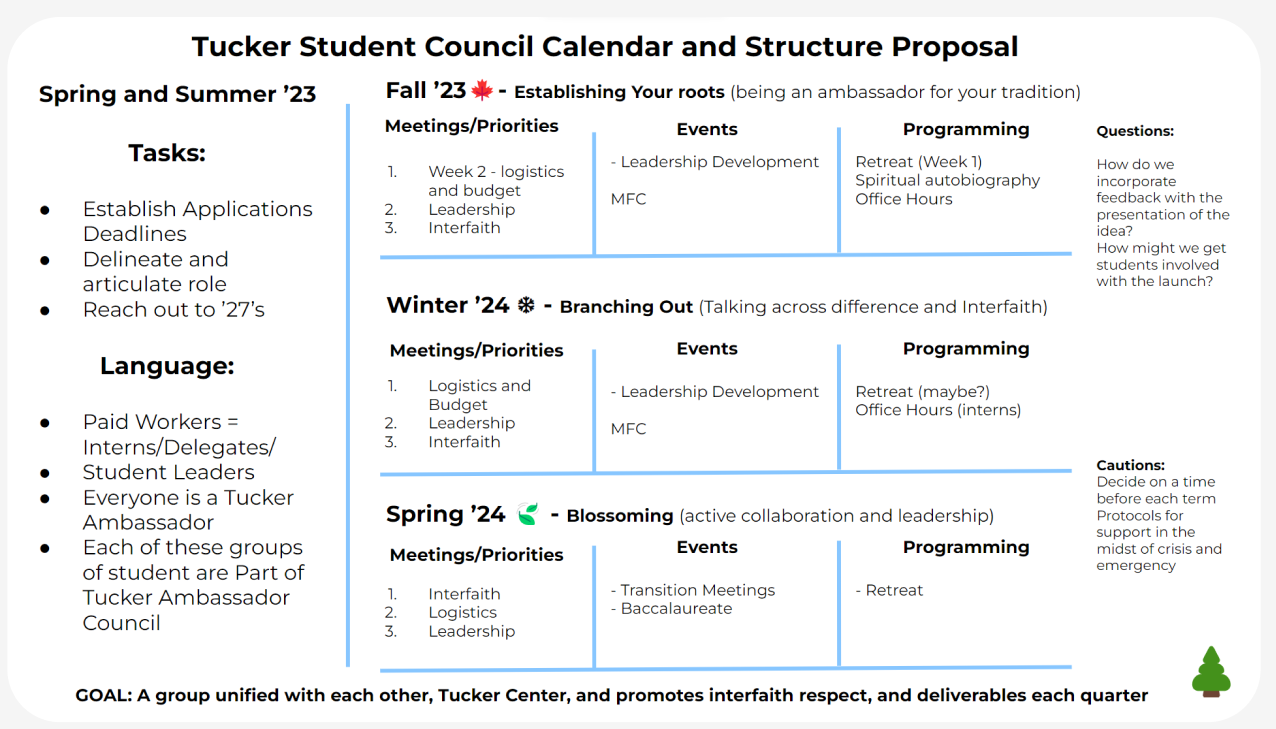Increasing Interfaith Involvement
Problem
Interfaith organizations at Dartmouth struggle with low engagement, worsened by frequent turn-over and loss of institutional knowledge, increasing administrative burden.
Solution
We created the Tucker Student Council to foster interfaith collaboration and streamline internal communication, while providing professional development and leadership training.
Takeaway
I facilitated stakeholder outreach and user research. After a team restructuring, I built creative confidence and collaborative iteration into our team dynamics.
Problem
This project took place as part of an extracurricular organization at Dartmouth known as Design Corps. Design Corps provides students with the opportunity to work as design consultants with local, on-campus organizations to solve systemic issues. Students apply to join the program and are placed on teams to work directly with clients over the course of 20 weeks to need-find, prototype, and iterate successful solutions. My team and I were paired with Dartmouth’s Tucker Center as our project partner. The Tucker Center is responsible for facilitating interfaith on campus. This means that as a governing body, the center oversees all student-led faith groups on campus, while also providing a non-denominational space for spiritual events, programming support, and funding. We worked directly with the Tucker Center’s director, Reverend Nancy Vogele. The problem identified by our client was trouble with engagement from different student-led faith groups both between each other and with the Tucker Center as a whole. To understand the barriers to increased involvement, we explored the organizational structure of the relationship between the Tucker Center and each of the groups, identifying group leaders, policy facilitators, language and literature used in these relationships, and most impactful student input on personal barriers.
We interviewed members from several different faith-based groups, and gained key insights into the unique needs of each. One such group, AGAPE, is one of the largest, most popular groups on campus. From interviewing members, we learned that students are motivated to attend and look forward to going to meetings together because AGAPE “builds a community like a family by talking about deeper things in life”. AGAPE facilitated honest relationships amongst its members, programmed events for members to meet and bond during, and balanced faith exploration with interpersonal connections.
Another group we interviewed was EDGE. From members within EDGE, we learned that “Having conversations with people who value the same things I do is the joy of my day”. Edge focuses strongly on exploring their faith together and supporting one another through that shared identity. One event that EDGE hosts that sees high turn-out is their community dinners, which are open to the public. Students reported that these “dinners are liberating and make [one] more willing to engage in interfaith conversations”, that by positioning people of different faiths around a shared meal, students were more open to engaging in spiritual discussions not tied down to specific faith-based beliefs.
We also heard from other, smaller groups in general that lack of participation in interfaith relationships results from a lack of “logistical support regularly”, and that there is a strong need for structure to facilitate relationships between different faith groups and with the Tucker Center as a regulatory body. From our primary research, we identified that the Tucker Center needed to foster a culture of commitment and meaningful engagement, and that interfaith conversations connected students and fostered shared investment in inter-group collaboration.
To further our research, we explored analogous groups on campus including the Dartmouth Outing Club and Dartmouth’s Mock-Trial Club. From these examples, we learned that students rarely attend non mandatory events, however mandatory meetings feel like an obligation when not valuable to students. Familiarity and routine builds community, and eventually investment in community replaces mandatory obligation as reason for attendance in many students cases. From current practice, campus events that begin as mandatory often form an enjoyable habit, even after the events become optional, fostering a sense of community and shared accountability. With this in mind, our product needed to create a culture within the Tucker Center that prompts commitment and engagement. Interfaith can bring together students to talk across difference, thus creating a shared culture of investment.
Solution
Our proposed solution was to create a Tucker Center Student Council, which provides structured meetings and facilitated relationships between students, group leaders, and staff members between different faith groups and Tucker Center as a whole. The council would be composed of student inter-faith leaders (elected as ambassadors within their respective faith groups), Tucker interns, and students committed to interfaith relationships and dialogue. The goal of the Council is to promote inter-faith community, increase inter-group and Tucker-student communication, provide professional development and create space for students to play a role in decision making.
Our solution creates a welcoming community for all students, fostering awareness of Tucker’s offerings and engagement with interfaith dialogue. It also achieves our client’s goal of decreasing administrative and advisory burden for ministers, shifting leadership to student-elected positions.
This model both relieves administrative burden as well as empowers students to gain practical experience from leading extracurricular groups. Our proposed solution also puts in place a sustained support system that helps to transmit knowledge across years and maintain continuity within ever-changing student groups. As students graduate, institutional knowledge of how to operate different faith groups is often lost, but by sharing experiences and formalizing relationships between faith-group leaders, information is systemically retained.
A critical component of our proposed solution was a development of a curriculum to structure this relationship between different faith-groups. Our proposal is a three-tiered curriculum focused on nurturing both interpersonal relationships and professional development opportunities across the span of a students time at Dartmouth, as laid out in the graphic to the right. This curriculum complements the Tucker Student Council model, aligning council meetings and structuring the focus of content covered during these meetings.
As the graphic suggests, the first stage is for newly involved students, often freshmen or sophomores. This tier focuses on cultivating involvement in one’s own faith group. At this stage, students are encouraged to seek involvement in the management of their group through a leadership position. We also suggest planning events like retreats and sharing spiritual autobiographies to strengthen connections between members within a group.
The second stage is geared at facilitating interfaith exploration. The Tucker Center represents interfaith at Dartmouth, and through the suggested curriculum, students would engage other faith groups in ways not currently done. This would involve attending meetings of other faith groups, meeting with leaders to gain insights on budgets, event planning, and student engagement. We also suggest faith groups engage in joint event planning to host events together.
The third stage is focused on helping students take the skills they have learned from their involvement in their own faith and with interfaith relationships and apply them in a professional sense. This includes hearing from alumni, working more closely with Tucker Center staff, and learning from members of different groups their experiences and goals.
We structured the opportunity to run a prototype of the Tucker Student Council to gain student feedback on our proposed idea. Our prototype gathered as many students from different faith groups as possible to attend a collaborative workshop with each other. The content of this meeting focused on introducing our research on the lack of interfaith relationships between the groups, as well as the benefits of these relationships. We then paired students up with members from different faith groups and had students engage in thoughtful discussions about interfaith prompts. We then took time at the end to get feedback on what went well and what didn’t. Overall we found students really enjoyed the collaborative environment and the willingness to contribute felt by everyone. Some students remarked that the pace was a bit too fast, impacting our recommendations for the final implementation of our proposal.
The handoff to facilitate the implementation of our proposed Council included clear guidelines of Do’s and Don'ts of students programming, all transition documents including a calendar of programming, application emails, and a language resource for different groups. Most importantly, we included suggestions for incorporating feedback into ongoing programming to enable our client to continue to iterate and refine the Council after our involvement.
Takeaway
This project was an extremely valuable contribution to my design education. This was my first experience as a hired professional working in the design field, and while the design process was something I had a lot of experience with, interacting with a real client on a real challenge outside of the classroom brought a certain level of intensity and gravity to our work. My role on this project was primarily outreach, both with our client and with students and ministers for user-based research and iterations. It was exciting getting to collaborate with the Tucker Center, as they had very little design experience but were very willing and enthusiastic to engage in the design process with us. This made client relationships very easy and productive, and made our role as design consultants feel authentic and impactful, ultimately motivating us to create a detailed, comprehensive client hand-off to best enable the Tucker Center to continue to iterate and refine our proposed solution.
In addition, my team was also comprised of other highly-qualified, well-experienced designers who all had similar backgrounds and skills to mine. For the first ten weeks of this project, this was a source of conflict within the team, as we had many strong personalities with different notions of division of labor and direction of the project. We ended up having a couple of members switched out for the second half of our project, which provided me a great opportunity to be much more intentional in creating the team environment. Starting back up for the second half of our project, I was very transparent with my team and facilitated honest discussions about team expectations, division of labor, and team roles. I then tracked our team’s progression and kept us on schedule using a timeline, which enabled me to help my team prioritize group progress over individual influence in the project. The second 10 weeks went by much more collaboratively, and as a team, we were able to produce a successful final product to meet our client’s needs. I found this experience incredibly rewarding, and the impact that intentional team dynamic building can have is a skill I have continued to implement in my future design project-based work.



